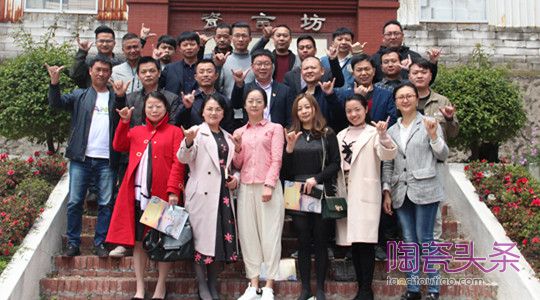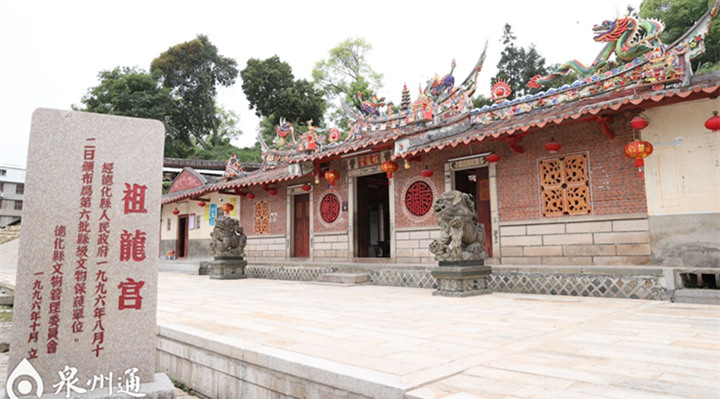外國人眼中的“中國白”2(連載)

-
小陶陶
2021-06-15 1166
14740
編者按:
由柯玫瑰(Rose Kerr)、約翰?蓋爾(John Ayers)所著《——德化白瓷》(Blanc de Chine—porcelain from Dehua)于2002年經新加坡亞洲文明博物館出版,是繼唐納利《——福建德化瓷》之后的一本專門研究德化白瓷的專著,影響甚為深遠。
該書收錄的都為國外研究德化白瓷的知名學者所撰寫德化白瓷研究資料。包括柯玫瑰的“德化器物款識介紹”,海蒂(Heidi Tan)的“鑒賞家探訪”,約翰?蓋爾的“的影響”,何翠媚(Chuimei Ho)的“考古眼光中的”,郭勒遜(Kenson Kwok)的“德化雕塑結構的一點看法”, 埃娃?施特勒伯(Eva Strober)的“德累斯頓的斯特朗大帝收藏的德化瓷”,以及附錄介紹等七個部分,從不同角度介紹了德化白瓷。與此同時,該書收錄的160件德化窯精品,為Hickley家藏,后捐贈給新加坡亞洲文明博物館,是了解、品鑒、研究德化白瓷不可多得的藝術精品。
本欄目將定期精選出相關代表性文章進行翻譯,以饗讀者。然而,由于作者水平的局限,翻譯過程中難免有所錯漏,不足之處敬請各位讀者提出寶貴意見。
Blanc de chine: some reflections by John Ayers 的影響(二)——約翰 蓋爾(翻譯:孫延燕)
Volker’s study highlights the puzzling problem of the long Ming period between 1400 and 1600 at Dehua: and evidence in this connection comes also from the Philippines. In a paper prepared for the 1968 Symposium on Chinese export wares held in Manila, Cecilia Locsin writes that several thousand pieces of this kind have been dug up in those islands. Some of them from controlled excavations. They include in particular a large number of pieces characterised by their more porcellanous and compact body and with laze better suited to and fused to it. Their shapes and decoration resemble those of the less porcellanous type, and all show signs of having been made in moulds. Their appearance in burials coincides with that of fourteenth-century blue-and-white, celadon and other types.She comments further that, inexplicably, the ware disappears almost totally in those sites where Ming lue-and-white, i.e. fifteenth-and sixteenth-century wares, appear. The wares of this time, however, she says, ..show a new vocabulary of forms, much fewer but greatly improved in quality, It is a pity that Mrs Locsin had not space or time for fuller details, but her comment bears out our wider experience suggesting that the Dehua export trade was for some reason in decline by this time.
沃爾克的研究突出了德化明朝1400年至1600年這段長時間之間這一令人困惑的問題: 這方面的證據也來自菲律賓。在為1968年在馬尼拉舉行的中國出口商品研討會準備的論文中塞西莉亞 勞辛寫道,在這些島嶼上已經挖掘出幾千件此類商品,其中一些來自受控的挖掘(1968年)。他們特別包括大量的作品,其特點是更多瓷化的和緊湊的胎體,并與釉色更好地適應和融合。它們的形狀和裝飾類似于不那么多孔的類型,并且都顯示出用模具制造的跡象。它們在墓葬中的出現與14世紀的藍白色、青瓷和其他類型的瓷器相吻合。她進一步評論說,令人費解的是,在那些出現明代青花瓷器(即15和16世紀的瓷器)的地方,瓷器幾乎完全消失了。這個時代的商品,然而,她說,“表現出一個新形式的詞匯,數量少得多但大大提高了質量。”遺憾的是,洛克辛夫人沒有空間和時間討論更充分的細節,但她的評論證實了我們更廣泛的經驗,表明德化出口貿易是由于某種原因在這個時候下降。
To the fifteenth century, Donnelly ascribes a handful of items, such as for example the small jarlets illustrated as Plate 2A in his book; and also, the larger type of Jar appearing as Plate 2B. The shape of this is decidedly unusual at whatever date while the relief decoration of a peony scroll and triangular leaf border, as he remarks, is more in line with early models than with seventeenth-century ones.
到了15世紀,唐納利把一小部分物品,例如小罐子歸為他書中所說的2A號盤子,大罐子歸為2B號盤子。無論何時,這盤子的形狀都絕對不同尋常,而他所說的牡丹花和三角形葉緣的浮雕裝飾,與17世紀的模型相比,更符合早期模型。
The most important example from this period at the British Museum is not part of Donnellys bequest. It is a bowl dated by an underglaze-painted inscription round the rim in brownish pigment referring to the sixth year of Zhengde, or AD 1511; and consequently this is the earliest known dated Dehua piece Donnelly 1969: P1 6A). Donnelly accepts it without reservation -correctly, I think-as being of standard blanc de Chine material. The inside Is blackened with accretions, perhaps from overlong use on an altar, but le porcelain itself is creamy and fine grained and of excellent quality, thickly made, with a close-fitting glaze; this must be a rare surviving example of the better-class ware of its time.
大英博物館這個時期最重要的例子,并不是唐納利遺產的一部分。而是一件是邊緣有釉下彩褐色顏料題字、標注正德六年或公元1511年的一個碗;這是已知最早的能夠追溯年代的德化作品。唐納利毫無保留地接受了它,我認為這是標準的瓷器。瓷器的內部因長時間放在祭壇上使用而逐漸變黑,但是瓷器本身是乳白色的,紋理細密,質量上乘,釉色厚重、胎釉結合完好。這一定是那個時代最好的、罕見的而幸存的瓷器。
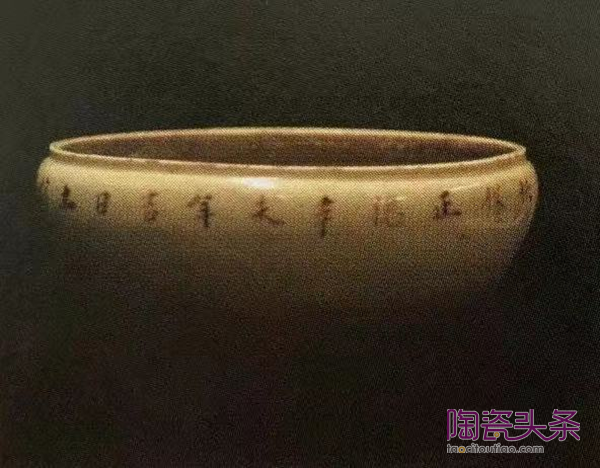
(Figure 6: Bowl with inscription dated AD 1511. Diameter 17.8 cm. British Museum. 圖6:刻有銘文的碗,日期是公元1511年。直徑17.8厘米。大英博物館。)
Donnelly's acceptance of this 1511 pi tece fits oddly with his other statement that blanc de Chine begins only at the end of the Ming Mid-to late Ming Dehua is represented also oy a type of Nar ase, baluster shaped and with side handles on the neck, which were no doubt based on bronze originals. A pair in the British Museum is not unlike the 1511 jar in their material: somewhat yellowish in colour, and with a sort of brown speckling in parts of the glaze. Donnelly illustrates another in a Hong Kong collection dated to the year 1586 in similar brownish pigment, as well as a not-too-different example in the Percival David Foundation dated 1639: which shows just how slow was the pace of development.
唐納利接受這1511年的陶瓷與他的另一個說法奇怪地吻合,那就是“”于明朝中后期才開始。明代中晚期的瓷器以一種祭祀用的瓶子為代表,為欄桿狀,壺頸有側把手,這毫無疑問是基于青銅原件。大英博物館的一對瓷器和1511年的瓷器在材質上很相似: 顏色有點黃,部分釉面有棕色斑點。唐納利在香港的一個1586年的藏品中,展示了另一個用類似的褐色顏料、沒有太大不一樣的在1639年的珀西瓦爾?大衛基金會的例子: 這顯示了發展的速度是多么的緩慢。
We have arrived at the seemingly more familiar territory of the seventeenth century, where all should be made easier by the rational study of known imports into Europe. But not wholly so-as we were effectively reminded three years ago by the remarkable undersea finds of Captain Hatcher. Hatcher found less blanc de Chine ware than one would ideally like; nevertheless, his sample is proof that in some cases Donnellys attributions are much too late. The tirst of these shipwreked cargoes from the South China Sea contained a mass of blue-and-white and other export wares, among which were two items dated by inscrip tion to the year 1643 and we may reasonably deduce that t most of the shiy Ip's cargo was made at, or not too long before, that date. Many of the blanc de Chine items are reproduced in a somewhat feeble catalogue illustration which all but the large pot in the centre and dish directly above it are of this ware.
我們已經到達了十七世紀似乎更為熟悉的領域,在那里通過對歐洲已知進口物的理性研究,一切都會變得更加容易。但并非完全如此——正如三年前哈徹號沉船在海底發現的令人矚目的東西有效地提醒了我們。哈徹號找到的瓷器比理想的要少; 然而,他的瓷器這個例子證明,在某些情況下,唐納利的貢獻太晚了。這些從南中國海運來的貨物中,第一批裝載了大量的青白瓷和其他出口商品,其中有兩件標明日期為1643年,我們可以合理地推斷,大部分這批貨物是在那一天或那天之前不久制造的。許多的產品都在一個有點模糊的目錄圖錄中再現,除了中間的大罐和正上方的盤子之外,其他都是這類產品。
Notice first the two incense burners in the top row on either side of the dish, which are of cylindrical shape with three cloud-scroll feet, and have a band of archaic bronze-style ornament impressed round the muddle. This very common type of censer is lustrated by Donnelly together with another encircled by bamboo ribbing, and a third that is completely plain. It would be difficult to represent these various types as forming any particular progression or development and some of them may well have remained fashionable for some decades.
首先注意盤兩邊頂排的兩個香爐,圓柱形,有三個卷云腳,周圍有一圈陳舊的青銅紋飾鑲嵌圍繞中間。這種非常普通的香爐被唐納利所闡釋,另外還有一個被竹子環繞的香爐,和一個完全普通的香爐。很難把這些不同的類型陳述為任何特定的進展或發展,其中一些類型可能幾十年來一直很流行。
Two cups on either side of the central vase are worth remarking The one on the left is one of the so-called'trick-cups', with a small, monk-like figure standing in the centre, said to represent a celebrated scholar-collector of the late sixteenth century; the figure conceal als a hole in the bottom in such a way that the drinker gets his clothes wet -an apparentl very popular late-ming joke. Donnelly remarks that Augustus the Strong had one of these in his collection before 11, which gives us a date for it": but he should have recalled that such cups were already being made in Ming blue-and-white. The other cup is fruit- shaped and has a knobbled surface, like a half-lychee -another conceit belonging very much to the declining years of the Ming as its presence here confirms .
中央花瓶兩邊各有的兩個杯子值得注意。左邊的那個是所謂的“魔術杯”中的一個,中間站著一個小小的僧侶般的人物,據說代表了16世紀晚期一位著名的學者收藏家;這個人物在底部隱藏了一個洞,以至于飲酒者把衣服弄濕了——這顯然是一個非常流行的晚明笑話。唐納利表示,奧古斯都在11歲之前就收藏了這樣一個杯子,這給了我們一個時間。另一個杯子是水果形狀的,有一個圓球狀的表面,像半顆荔枝——這也是一個與明朝衰落時期非常相似的奇觀正如它在此出現證明的。
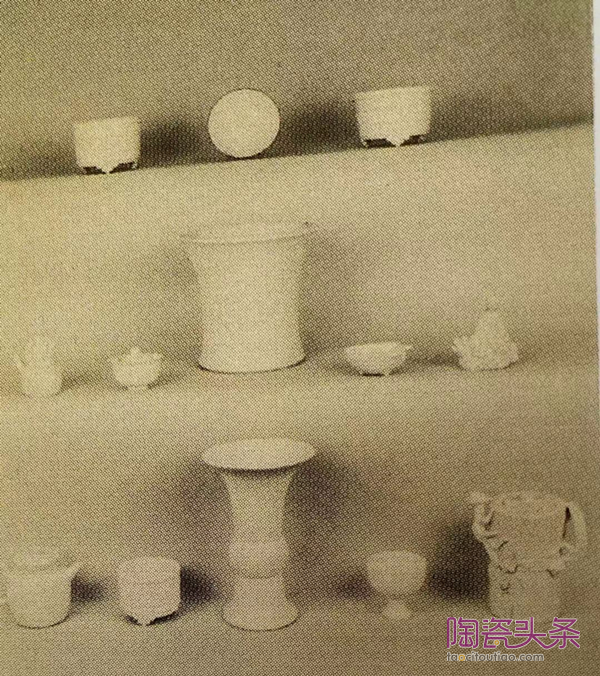
(Figure 7: Mainly blanc de Chine ware recovered from the south China sea, 1643. Christie’s. 圖7:主要是1643年在南中國海,發現的白中白瓷器。佳士得拍賣行。)
On the lower shelf to the right we have a small stem cup, and next to that a more striking discovery in the form of a cylindrical wine-pot with dragon-handle and spout. I shall, however, return to this and deal first with the large piece in the centre: a beaker vase in the form known as gu. Recent evidence of importance in this connection is the fine blanc de Chine gu that came to light in the tomb of the Ming emperor Wanli, who died in 1619. The example in Figure 8 is somewhat more slender perhaps than the Hatcher piece but, with its encircling ribs above and below the central boss, not very different from another included in Marchant's exhibition, nine inches or so in height and with a fine ivory-white glaze, this is an elegant piece for which their dating of"c. 1640'seems in every way reasonable.
在右下層架子上我們有一個小莖杯,旁邊還有一個更引人注目的發現,是一個帶龍柄和壺嘴的圓柱形酒壺。不過,我還是回到這里,首先處理中間的大件物品: 一個燒杯花瓶,叫做觚。在這方面最近的重要證據,是在明朝萬歷皇帝墓中發現的瓷觚,他是于1619年逝世的。圖8中的例子可能比哈徹號的作品要細長一些,但是由于它的中央的上面和下面環繞的浮雕,與馬錢特展覽中的另一件作品沒有太大的不同,高9英寸左右,上有精致的象牙白釉,這是一件優雅的作品,他們對“1640年”的斷代從各個方面看都是合理的。
Such a piece indicates standards of quality in the late Ming that Donnelly would have been reluctant to concede; he would no doubt, however, have been even more astonished by the dragon-handled wine-pot The Victoria and Albert Museum has one of similar design(Fig. 9)and in rather better condition, the Hatcher one having suffered somewhat from its long stay on the seabed. This item appears as No. 2 in the Dresden inventory of tea things; although in China it was probably intended for wine. Intriguing, also, is the appearance of an unfamiliar form of Dehua teapot- rather tub-shaped with a wide mouth, flat lid and small sloping spout(Fig. 10): this somewhat resembles a form found in early Yixing wares. The first known blue-and-white teapots are apparently those found in this same wreck. Another form of small wine-pot, with bam- boo-stvle ribbed sides, that adds interestingly to the repertoire also occurred in the wreck.There is one in the Victoria and Albert Museum very like it, but of rather better quality. Relevant factors in identifying the mid-seventeenth century types of blanc de Chine remain firstly the material itself, which is repeatedly of fine, ivory-like quality, and usual an altogether thicker and stronger style of potting, noticeable especially in the handling of the foot.
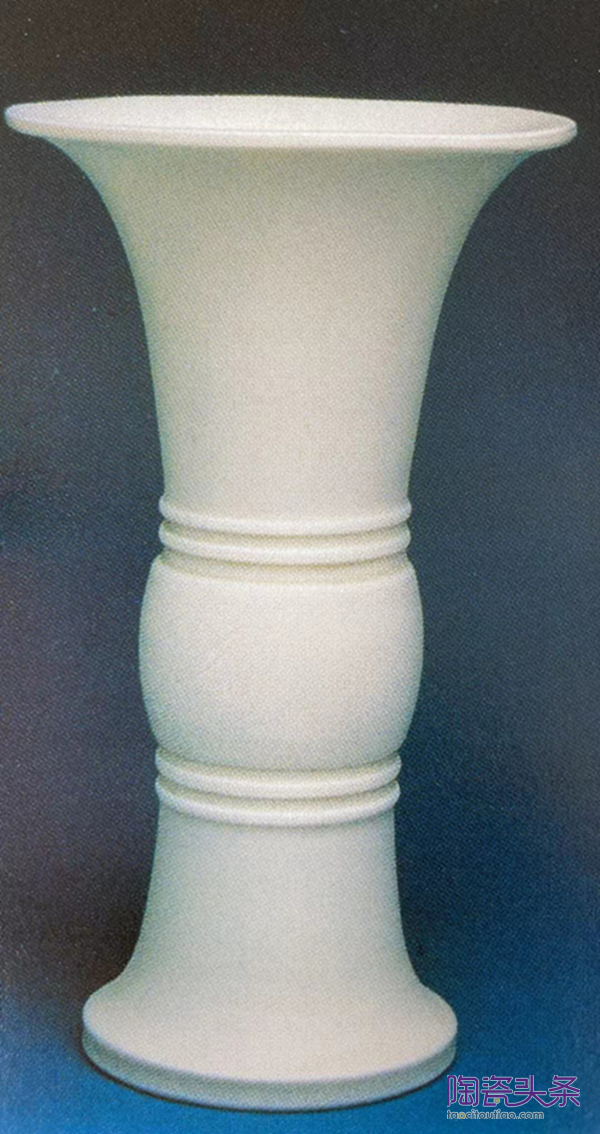
(Figure 8: Gu Vase.Height 22 cm.1630-60. S.Marchant and Son.圖8:觚,瓶高22厘,1630-60。馬錢特和他的兒子。)
這件作品表明了晚明時期的質量標準,唐納利不愿意承認這一點,然而,他更為驚訝的無疑是龍柄酒壺。這個維多利亞和阿爾伯特博物館有著類似的設計(圖9),而且狀況更好,哈徹號沉船的瓷器因為長期留在海底而受到了一些影響。這件物品在德累斯頓茶具清單中排名第二,盡管在中國它可能是用來作酒具的。另外,一款外形不尋常的德化茶壺,形狀像桶狀,有寬口、平蓋及小斜嘴(圖10) ,與早期宜興器物的形狀頗為相似。已知的第一個青白茶壺,顯然就是在這個廢墟中發現的。另外一種小型的酒壺,有著竹子一樣的棱紋邊,有趣的是,在殘骸中也發現了同樣的物品,在維多利亞和阿爾伯特博物館有類似的物品,但是質量要好得多。鑒別十七世紀中葉相關因素首先是材料本身,它反復呈現出象牙般的優良品質,而且通常是一種更厚、更強的陶器制作風格,尤其是在“腳”的處理方面。
I turn now to an important-perhaps indeed the most important-aspect of Dehua production: that of figure models. Donnelly gives these three chapters in his book but it is still hardly enough, while illustrations of figures take up almost half the 150 plates By the end he clearly did not regard the problems they raise as to any great extent resolved and many of his dates are avowedly tentative: 1750 to 1800 or later being a good example for a piece bearing the mysterious so-called fisherman mark. Such caution is not surprising in view of the great lack of firm evidence and there are no easy answers to the questions arising over the twenty-four or so different modellers whose marks he records, about not one of whom is anything of consequence recorded, from the seventeenth right down to the twentieth century when more than a few of them may well, I fear, have been active.
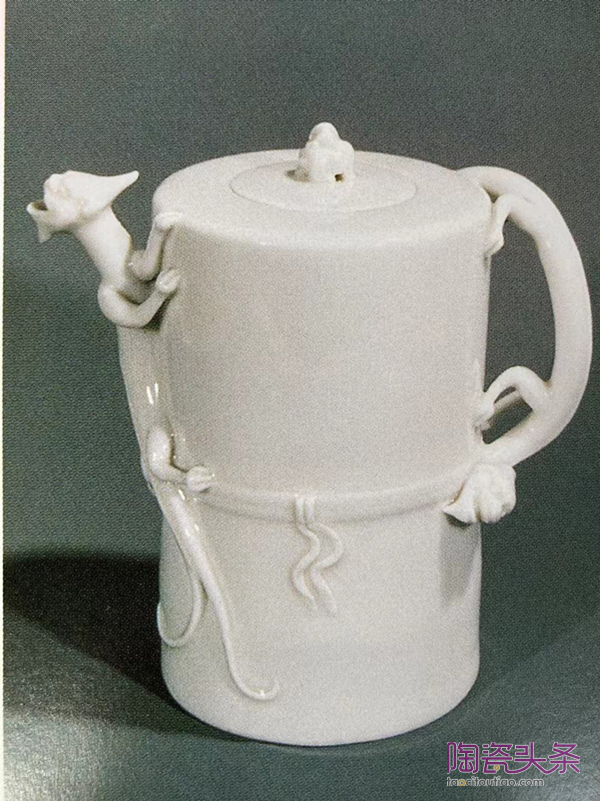
(Figure 9: Ewer with dragon handle and spout. 1630-60.Victoria and Albert Museum. 圖9:龍柄龍嘴壺。1630-60.維多利亞和阿爾伯特博物館。)
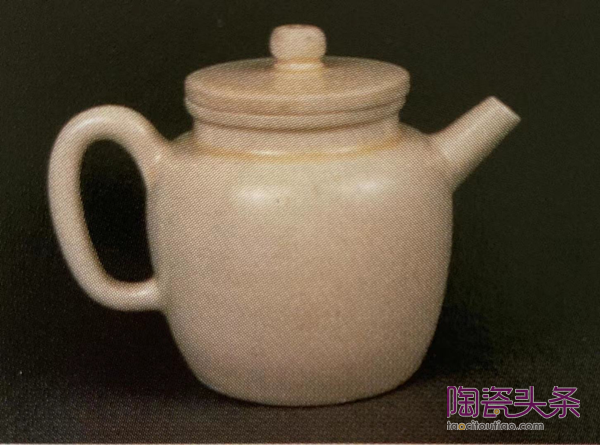
(Figure 10: Teapot recovered from the south China sea. Heitht 11cm.1643. Christie’s. 圖10:從南中國海找到的茶壺。11厘米1643。佳士得拍賣行。)
現在我要談談德化作品的一個重要方面——也許確實是最重要的方面: 人物雕塑。唐納利在他的書中給出了這三個章節,但這仍然是不夠的,雖然瓷雕的插圖占了幾乎150個板塊的一半。到最后,他顯然沒有認為他們提出的問題在任何大的程度上解決了,他的許多日期 明確的是試探性的: 1750年至1800年或以后是一個很好的例子,一塊承載了神秘的所謂“博及漁人”款。這種謹慎并不令人驚訝,因為缺乏確鑿的證據,而且對于他記錄的二十四個左右不同的模型制作者所產生的問題也沒有簡單的答案。這些模型制作者中沒有一個人的標記是有重要意義的,從17世紀到20世紀,我擔心他們中的很多人都曾經活躍過。
As to the quality and merit of the figures he was in no doubt. "In the finest of them, he wrote, ". superb modelling and plastic authority are seen to advantage and, as Rackham put it, provide a test of aesthetic discrimination than which a better could hardly be found. Or to quote W. B. Honey, who was equally at home among European figures, ‘Modelling at once bold and sensitive with a remarkable sense of rhythm, was helped by a rare quality in the material, which seems to have the property of vitrifying without losing shape. The best Fukien figures may indeed be held to be the finest porcelain figures ever made;.the characteristic fragility and nervous delicacy of porcelain, as well as its sensuous charm, playing an indispensable part.’
至于那些人物的品質和價值,他是毫無疑問的。他寫道:“在他們中最好的,杰出的造型和塑造的權威性被認為是優點,而且,正如拉克姆所說,‘提供了一個無法超越的審美鑒別標準’。”或者引用哈尼的話,他在歐洲人物中同樣游刃有余,既大膽又敏感,又有著非凡的節奏感,得益于材料中一種罕見的特質,這種材料似乎具有玻璃化而不失形狀的特性。福建瓷塑可能確實是有史以來最好的瓷器。瓷器特有的脆弱和敏感的細膩,以及它的感官魅力,扮演了一個不可或缺的部分。
責任編輯:陳美珠






